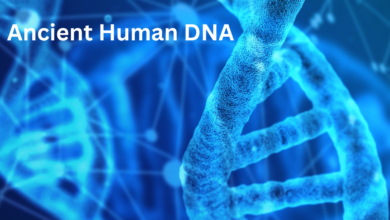
Scientists are concerned about the potential spread of “chronic wasting disease” from deer to humans.
Last month, the first case of chronic wasting disease (CWD) was discovered in Yellowstone National Park, leading some scientists to raise concerns about the potential transmission of this fatal brain disease to humans.
A deer carcass in the Wyoming area of the park was found to be positive for this highly contagious prion disease, which can also induce symptoms such as weight loss, stumbling, listlessness, and neurological issues, according to the CDC. CWD has been observed in deer, elk, reindeer, and moose in various regions of North America, Canada, Norway, and South Korea.
Symptoms of the disease may emerge within a year, and it has been nicknamed the “zombie deer disease” due to the alterations it causes in the brains and nervous systems of affected animals, resulting in drooling, lethargy, emaciation, stumbling, and a distinct vacant stare, as reported by The Guardian.
Scientists are now warning that despite no recorded cases, there is a possibility that it could infect humans. Epidemiologists caution that just because a “spillover” case hasn’t occurred yet, it doesn’t mean it won’t happen. CWD is part of a group of fatal neurological diseases, which also includes Bovine spongiform encephalopathy (BSE), commonly known as “mad cow disease.”
Dr. Cory Anderson, program co-director at the Center for Infectious Disease Research and Policy (CIDRAP), used the BSE outbreak in Britain as a cautionary example of how a spillover event from livestock to people can quickly lead to chaos. He emphasized that while no one is predicting a similar event, it’s crucial for people to be ready for the possibility. Anderson also highlighted the concerning fact that currently there is no known effective and easy method to eliminate the disease from the animals it infects or the environment it contaminates.
The CDC’s website states that certain animal studies suggest chronic wasting disease (CWD) may pose a risk to specific types of non-human primates, such as monkeys, that consume meat from CWD-infected animals or come into contact with brain or body fluids from infected deer or elk.
These studies have raised concerns about the potential risk to humans,” the CDC website notes. “Since 1997, the World Health Organization has emphasized the importance of preventing the agents of all known prion diseases from entering the human food chain.”
According to park officials, CWD, a fatal brain disease, has spread throughout Wyoming since the mid-1980s and is now prevalent in most of the state. The disease is estimated to affect 10-15% of the mule deer near Cody that migrate to the southeastern section of Yellowstone in the summer.
Yellowstone National Park recently stated that the long-term impact of the disease on deer, elk, and moose in the park remains uncertain.
According to The Guardian, The Alliance for Public Wildlife estimated in 2017 that humans were unknowingly consuming 7,000 to 15,000 CWD-infected animals annually, with this number projected to increase by 20% each year.
In 2005, researchers began monitoring 80 individuals who had mistakenly consumed infected meat and discovered that the group showed “no significant changes in health conditions,” as reported by USA Today.






Great👍 info